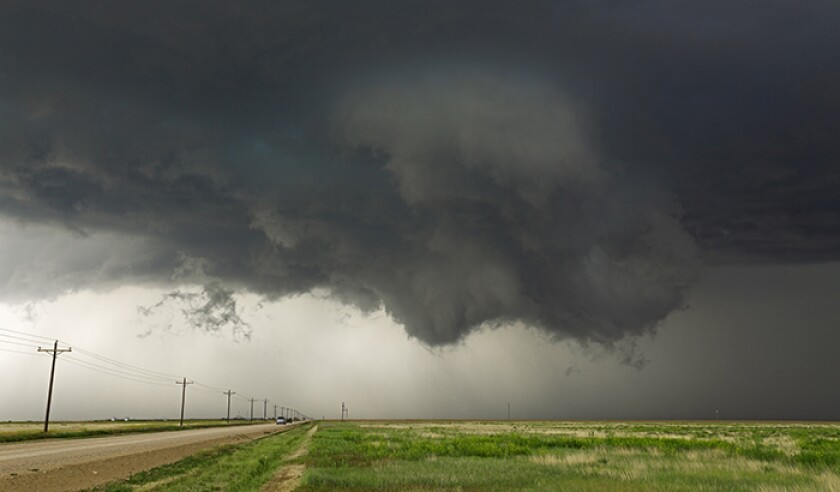The current model has the effect of capping-off cat risk considerations by using a standard one-in-250-year measure.
The new model criteria could also result in bigger asks for collateral in leveraged quota share sidecars, for example, although this is not expected to happen very frequently.
If it did, it would reflect the pressure brought to bear on sidecar ceding firms that might no longer benefit from full reinsurance credit on their capital charge if that charge moves up to 1-in-500 years and if collateral is being provided up to lower levels.
The criteria update will also disallow senior debt from being counted as available capital, meaning that those firms currently relying on it as part of their capital stack may now be looking to refinance.
The adjustments to capital requirement and cat risk ratings criteria are two aspects of a much wider and more detailed model update, but they are thought likely to be among the most impactful.
This means that cat-exposed writers and those with senior debt are in the frame as potentially some of the most impacted firms; that is, Bermudians and some US carriers.
The proposed changes came in a report for comment, but with no actual draft model – a source of some frustration to industry practitioners.
The model will come after the - now extended - 18 March deadline for comments. Once S&P has considered feedback and come up with its final criteria, the model will go live immediately when it is published, adding a degree of jeopardy for firms who won’t know what the exact impact on their numbers will be until that point.
The release will be accompanied by a watchlist of firms under criteria observation, or UCO, with a timeline of about 90 days before S&P finalises any ratings changes.
Impacts are likely to be nuanced, sources say, with S&P itself expecting that only a maximum 4% of firms will be downgraded.
Sources emphasise that in general the model change appears often to take with one hand and give back with the other, and that a high degree of interplay between components within the model mean that it’s impossible to know precisely what the impacts will be.
“The aim isn’t to change the market; it’s more about differentiating between the levels of capital at AA and AAA level, making AAA more meaningful, and changing the way people manage capital,” says a source.
Another said: “The difference between the capital requirement for AAA and AA under the new model has increased significantly compared to the old model. It could impact companies that are on the borderline with S&P.”
One possible reason why a bigger differentiation on top-rated capital is in S&P’s sights for this model update is climate change, with the ratings agency having last year highlighted the challenges of encouraging the industry to build in costs over the longer-term.
Cat risk
Up until now, the model used a one-in-250-year, all-peril probable maximum loss (PML) to calculate the cat charge for all carriers, whatever their rating.
S&P has now proposed using a range of PMLs for these calculations, from one-in-200 for BBB rated capital up to one-in-500 for AAA capital.

The PMLs relate to a new range of stress scenarios which go from “moderate” up to “severe” (AA capital) to “extreme” (AAA capital). The cat charge is also now pre-tax, where before it was post-tax.
Carriers that write cat risk are generally rated somewhere from A- to AA-. The capital held to achieve those ratings, if a company writes a significant amount of cat risk, is generally at a level a notch higher, so either AAA or AA rated capital.
Impacts are expected to be stronger for carriers with higher exposure to tail risk compared to those writing more risks at lower-attaching levels.
“You might have a gap in the tail of your risk. It could mean you have to hold extra capital as a reinsurer for that gap in the tail. It could mean firms want ILS funds to post more collateral,” a source said.
This could affect collateralised quota share deals where the cedant currently retains the tail risk, but under the new model would like more collateral security further into the tail. However, as many sidecar investors typically already post collateral to cover up to the 1-in-250 to 1-in-500 year loss, sometimes even up to 1-in-1000, this would likely affect only a small number of deals.
The same issue could theoretically apply to a fronted reinsurance portfolio. However, some sources said that the levels of leverage on offer from commercial fronting providers are already typically far more remote than the one-in-250 threshold. Many fronting arrangements are already asking for collateralisation at a one-in-1,000-year level, one source observed.
At the same time as increasing the stress level, S&P is bringing in a diversification benefit between cat risk and other types of risk in different business lines, and premium and reserve risk.
In some cases, the diversification benefit has gone up from 5% to 25%-30%.
“This is significant and could offset the impact of the higher cat charge,” a source said.
In general, all carriers will get some diversification benefit but it’s not currently clear precisely how much.

The changes to diversification again bring S&P’s model more in line with Solvency II, as well as with AM Best – which typically already rates the pure cat reinsurers operated by some ILS firms.
One source suggested that the altered criteria on cat risk may open up opportunities in tail risk, as there may be more demand for cover at remote levels.
“Now they are looking at one-in-500, it opens up that area and people may look at it in more detail. How much tail risk they are retaining? Exactly how much is up there? Potentially, that will impact what you can do, and the products,” they said.
More broadly speaking, to the extent the changes exacerbate the trend over the past year for some rated carriers to scale back their catastrophe exposure following recent loss years, this could also open up opportunities for the ILS market to step in.
Senior debt
Senior debt is now not allowed as available capital under the new criteria, so those firms currently relying on it as part of their capital stack could look to refinance.
One source estimated that senior debt issuance amounted to about $7bn of capital across the market, or somewhere between $5bn to $10bn.
An insurer CFO said: “If I had issued tier 3 debt last year, I’d be feeling quite sick now.”
“If they take away a lot of people’s capital immediately this will obviously impact the market. It will reduce capital available to write cat business. Also, it mainly impacts Bermudians, which is where a lot of cat risk sits,” said a source.
Senior notes are already not allowable as available capital under Solvency II. In this respect, the change is bringing Bermuda more in line with Europe. It could result in higher issuance of junior subordinated notes by Bermudians.
In the US, the change affects companies where senior notes are held at holding company level, but not where they are pushed down to the operating entities.
This could be “very significant for various players,” says a source.
Everest Re, which issued $1bn of senior debt last October, addressed the issue on its Q4 earnings call last week, explaining that it “should be unaffected,” because its debt was issued by a US holdco with a regulatory domicile in the US as opposed to Bermuda. This implies that it would look to down-stream the notes to a US operating company to stay on the right side of S&P’s new lines.
The negative impact of the change in treatment of senior debt is potentially offset by another model tweak that lets deferred acquisition costs (DAC) now be accepted as available capital, which wasn’t the case in the past.
“This can be a very significant portion for some companies. It’s hundreds of millions of dollars or, depending on the size of the company, it can be billions. That’s a very large increase in capital,” says a source.
Stuart Shipperlee, director at Litmus Analysis, said: “Our impression is that if a company is in a position that it needs to create a plan to restore the capital position, and S&P has confidence in the credibility of management and of that plan, and that the plan would be delivered by end of this year, then S&P would credit that as part of a forward-looking view.”


